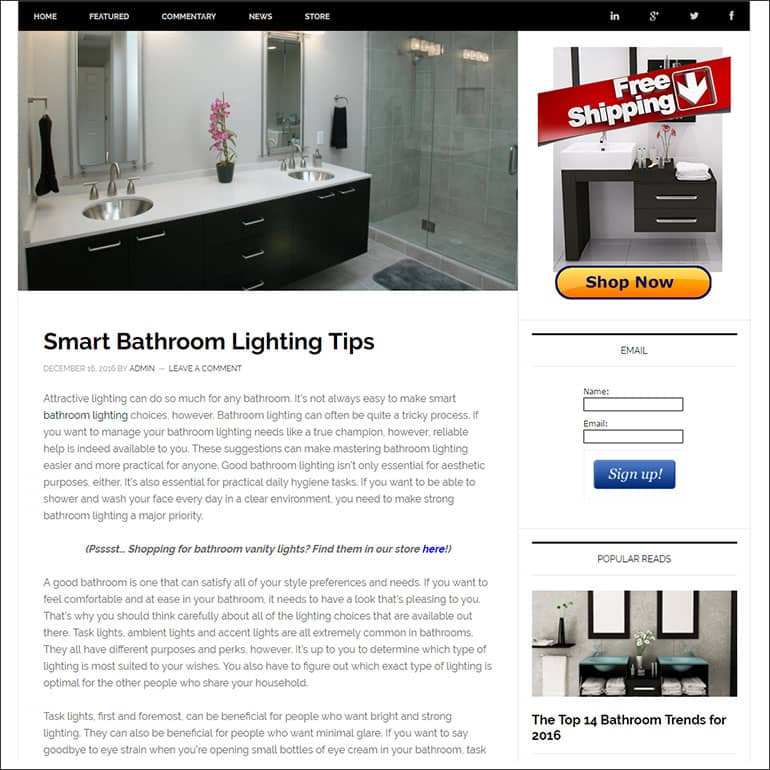How a blog can help your ecommerce business?
- Category :
- Ecommerce Business Ideas

Are you toiling hard day in and day out to create an exceptional and successful eCommerce business in the already crowded and ultra-competitive market?
Then, it takes a couple of more tricks up your sleeves than just having a great online store, sturdy product display and a simpler check-out process.
So, what do you need?
Well, you need to connect with your audience more often, nurture the relationship with them and make efforts to let them know about the reason why they need to come to you.
Effective tips to fuel your ecommerce business growth
The question here is: how is it possible, when you already have a well-oiled marketing machine working?
The answer to this question is just a small word—blog.
Yes. Blogs have an unmatched ability to strike great chords with the customers to tell them stories related to your business, products, brand that make them want to come back or do business with you. Being an owner, During the period of ecommerce website development, all always want maximum people to reach into website..
That’s just not it; blogging can reward you in ways and means you would have never considered or imagined.
Let us see, how.
Ecommerce blog help you communicate with your targets

Ecommerce blogging is not done for directly promoting or marketing your online store products. However, the actual underlying purpose definitely is using the blog as a tool to getting more sales. The only thing is that you are convincing subtly.
You can discuss about the relevant industries in which you are operating and solve general issues faced by customers by offering some tips, techniques and insights. This indirectly introduces you to the customers and establishes you as an authoritative entity in the domain. Thus people trust you more and prefer your products over others.
Tell your stories, impress people and drive them to you site

Another important perquisite with having an ecommerce blog is that, you can share stories about your experiences with your customers and they can share theirs with you — and who wouldn’t enjoy a good story?
Such stories about the products, online store or anything related have a naturalability to get the attention of readers when these stories are about real people having real great experience. This can help them develop great impression and brand value about your online store and products in their minds, which you know is good.
Keep ears and eyes open towards the fears, agonies and aspirations of your customers. This gives you enough ideas for writing blogs that have some element of value to the customers. Just by telling the same thing again and again turns off people. Blogs can bring you benefits only when it’s relevant to customers and appear to be informative and interesting.
Also, this can be a great welcome change to the customers who are bombarded by everyone talking about the features of a product more often, and you that can get you only so far.
Instead, a story filled with real emotions can take you where you want to go.
You can detail product features, beautification and installation
Ecommerce blogs from great brands never boast about themselves or their products. Instead, they focus on understanding problems of customers and showing them that they care for their customers by explaining solutions through the blogs. Genuine benefits and product advantages can however be explained. You can also use room pictures or demonstration videos. Having such a detailed explanation, you can attract some high quality links from other websites which can contribute significantly in terms of SEO.
The chances of going viral
An era dominated by social media and media sharing platforms, everything excellent gets shared pretty fast. If you have a good story worth sharing and if it goes viral, you will have created exceptional brand awareness that no marketing effort can get you—that too, free of cost.
It is not just about the digital platforms that your story can get shared on, you can also get featured in traditional media, as well.
The advantage of showing them, rather than telling them

If you consider that blogging is a just form of marketing that can immediately drive sales, it does not work that way. Story telling through blogs must be an integral part of your brand marketing efforts—not just an aspect.
When you show the customers how you are able to influence customers, they naturally will incline to you—because showing is more powerful.
As you would know, blogging is an important piece that has a myriad of benefits, if you are ready to embrace it in the right way.
If you don’t already have one, go, create one and tell stories that make people happy, engaged and wanting to come to you.
Blog is something that paves way for a win-win situation. It educates customers and at the same times helps an ecommerce business owner to sell more products.
A blog may not necessary solve all the business problems you are facing but with it you can increase your brand value and become more popular among the prospects. Additionally, customers will find more reasons to interact with you.
Once you write a blog, it stays in the web forever. Even when you leave it unattended, an older blog post may still be getting hundreds of views with some great potential for conversion. It can doubtlessly be claimed that blogging helps a business grow.
Other Blogs You May Like
